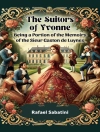Mary Noailles Murfree’s ‘The Crucial Moment’ is a remarkable exploration of the human spirit set against the backdrop of the American South. Blending romanticism with regional realism, Murfree’s prose captures the rich landscapes and intricate social dynamics of the time, offering keen psychological insights into her characters’ dilemmas. The narrative employs vivid imagery and lyrical language, reflecting the cultural currents of the late 19th century while engaging with themes of love, sacrifice, and the moral complexities faced by individuals in pivotal life moments. Mary Noailles Murfree, often celebrated as one of the first Southern woman writers, drew upon her upbringing in the Smoky Mountain region of Tennessee to infuse her works with authenticity. Her deep understanding of the local culture and landscape influences the narrative pace and character development in ‘The Crucial Moment.’ Murfree’s experiences navigating a male-dominated literary world likely propelled her to create multifaceted female characters who grapple with their identities and societal expectations. Readers seeking a profound and evocative treatise on the intersections of love and duty will find ‘The Crucial Moment’ to be an enriching addition to their literary repertoire. Murfree’s skillful storytelling not only immerses the reader in a bygone era but also prompts timeless reflections on the choices that shape our destinies.
关于作者
Mary Noailles Murfree (January 24, 1850 – July 31, 1922), was an American fiction writer acclaimed for her local color stories featuring the Appalachian region of Tennessee. She initially wrote under the masculine pen name Charles Egbert Craddock to mask her gender and ensure her works received fair consideration in a male-dominated literary market of her time. Murfree’s expertise in portraying the rugged landscape and the inhabitants of the Cumberland region with a mix of realism and romanticism distinguished her literary style. In her noteworthy contribution, ‘The Crucial Moment’, Murfree adeptly weaves human emotions with the intricacies of rural life, showcasing her ability to draw readers into her vividly depicted worlds. Among her other significant works are ‘In the Tennessee Mountains’ (1884) and ‘The Prophet of the Great Smoky Mountains’ (1885). Her detailed and sympathetic portrayals of the mountaineers, coupled with her use of regional dialects, contributed to the authenticity of her narratives and resonate the ethos of the American South. Murfree’s contribution to the local color movement in American literature is indelible, offering insights into the lives and landscapes that were often underrepresented in the literary canon of her time.












